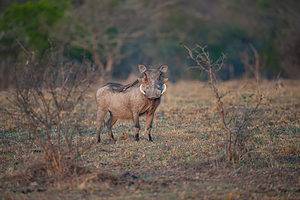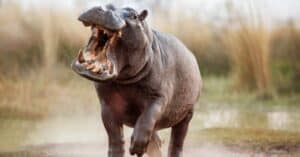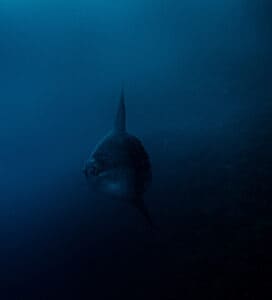There are at least 17 different species of birds with primarily black plumage coupled with yellow beaks in one or both sexes. Read on to meet them all and learn what other features can be used to identify each!
1. Black Crake (Zapornia flavirostra)
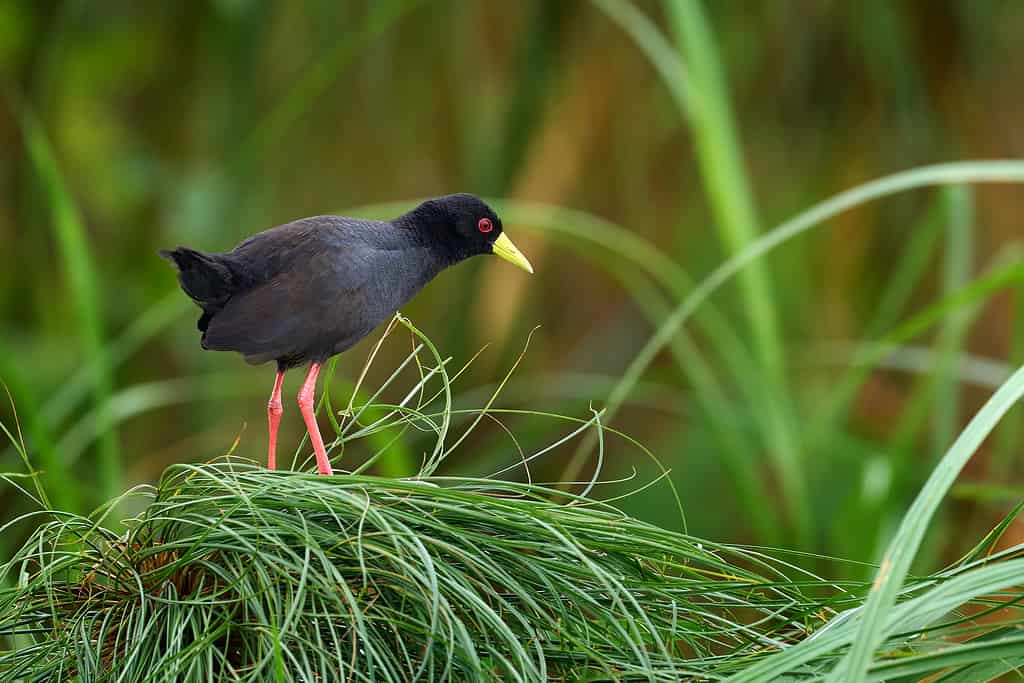
The black crake inhabits freshwater wetlands across Sub-Sahara
Africa
.
©Ondrej Prosicky/iStock via Getty Images
The black crake is 19.0 – 23.0 cm (7.5 – 9.1 in) long. Both sexes have slaty black plumage with a slight wash of olive-brown on the wings and upperparts (usually not visible in the field). Their beaks are bright yellow, but the irises, eye rings, legs, and feet are all red. The red legs and feet become even brighter during the breeding season.
2. Black Thrush (Turdus infuscatus)
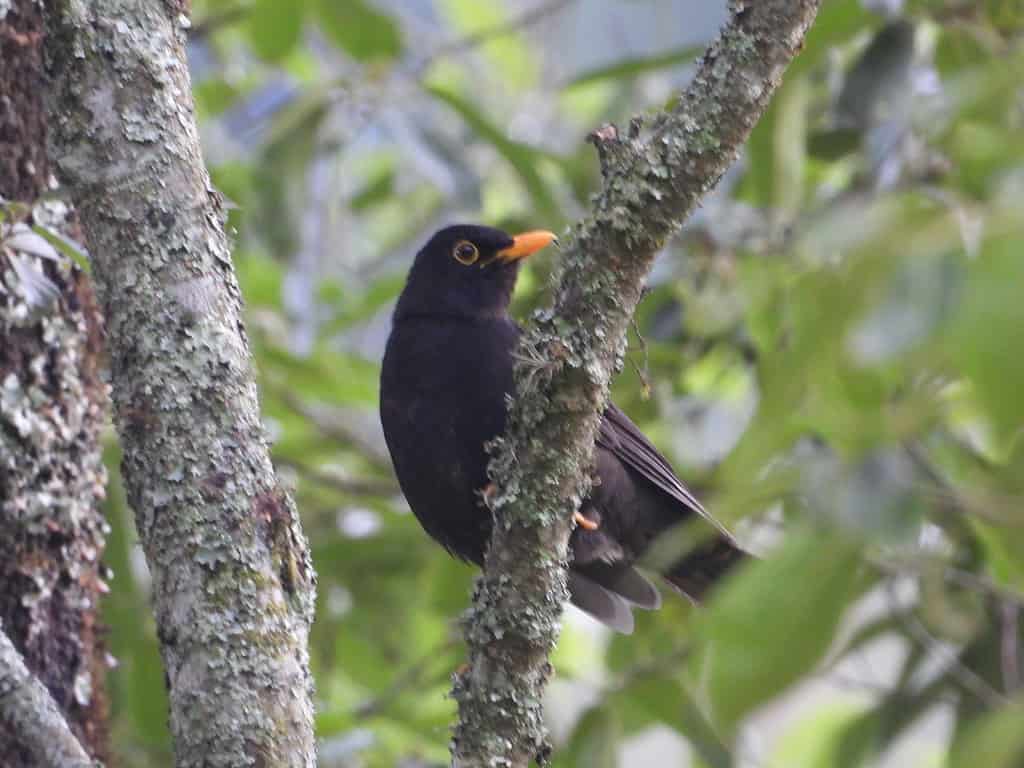
The black thrush is native to montane forests in Mexico and Central America.
©Adrianh Martínez Orozco / CC BY 4.0 – License
The black thrush is 21.5 – 24.0 cm (8.5 – 9.4 in) long. Only the male has all-black plumage and a yellow to orange-yellow beak, while the female is brown with a dark bill. However, both sexes have yellow eyerings, dark irises, and yellowish legs and feet.
3. Chiguanco Thrush (Turdus chiguanco)
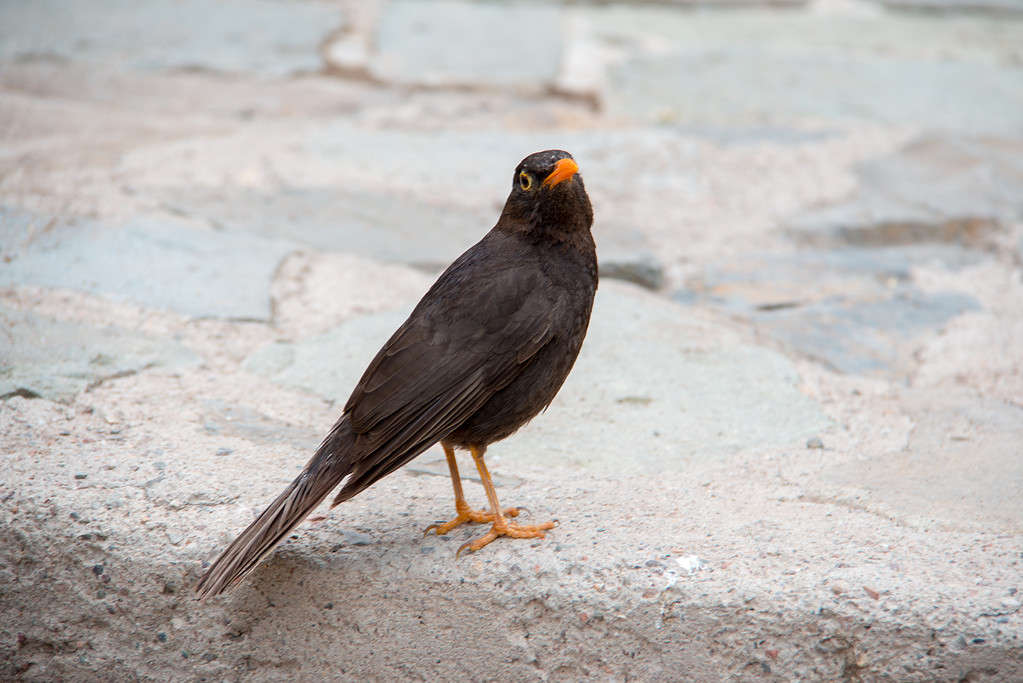
The Chiguanco thrush is native to western South America, with color differences between northern and southern populations.
©jroballo/iStock via Getty Images
The Chiguanco thrush is 25.0 – 30.0 cm (9.8 – 11.8 in) long. While both sexes in northern populations are olive gray-brown, southern populations are blacker with yellow eyerings. Both sexes in both populations also have yellow to orange-yellow beaks, legs, and feet, along with red to chestnut irises.
4. Chinese Blackbird (Turdus mandarinus)
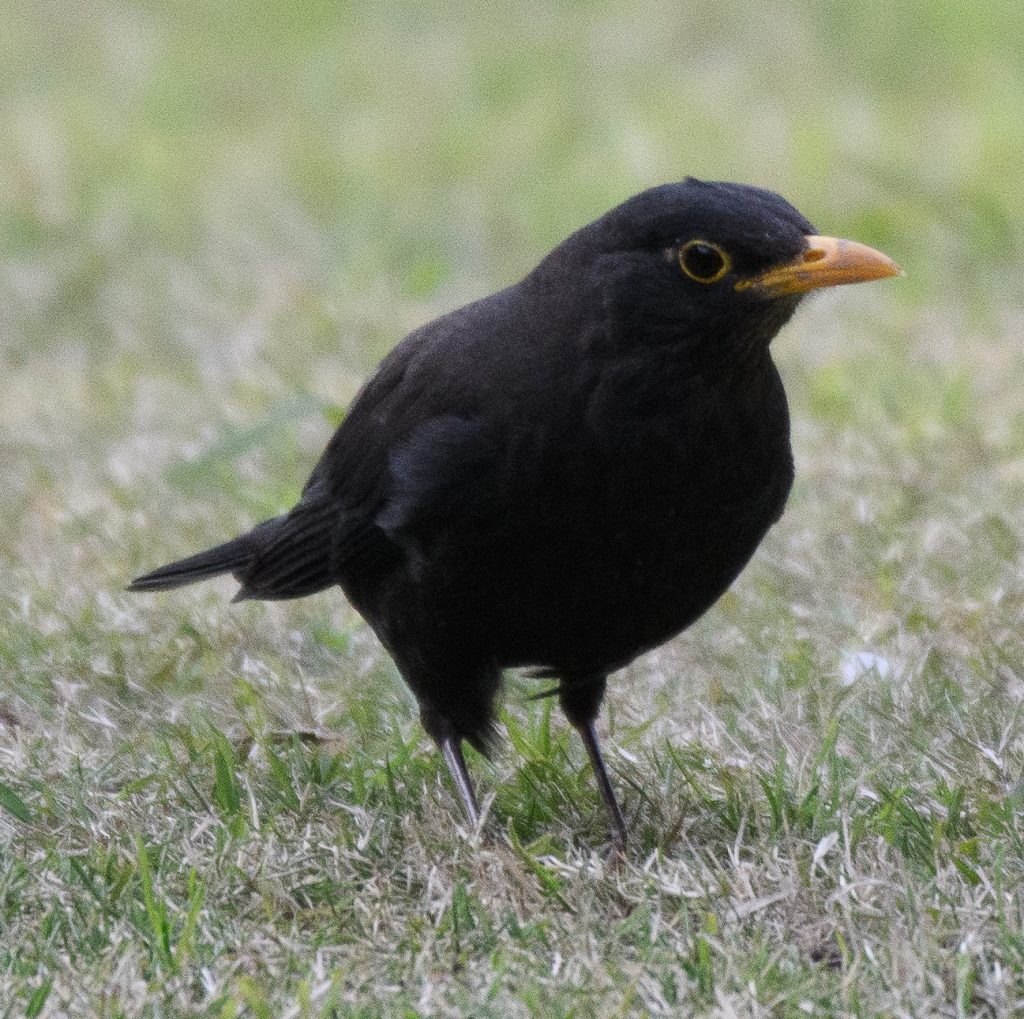
The Chinese blackbird is a species of thrush native to China and Indochina.
©hesyifei / CC BY 4.0 – License
The Chinese blackbird is 28.0 – 29.0 cm (11.0 – 11.4 in) long. Only the male is sooty black above and brownish-black below with a yellow to orange beak and eyerings, while the female is slightly browner with a brownish beak with a bit of dull yellow at the base. Both sexes also have dark irises, legs, and feet.
5. Eurasian Blackbird (Turdus merula)
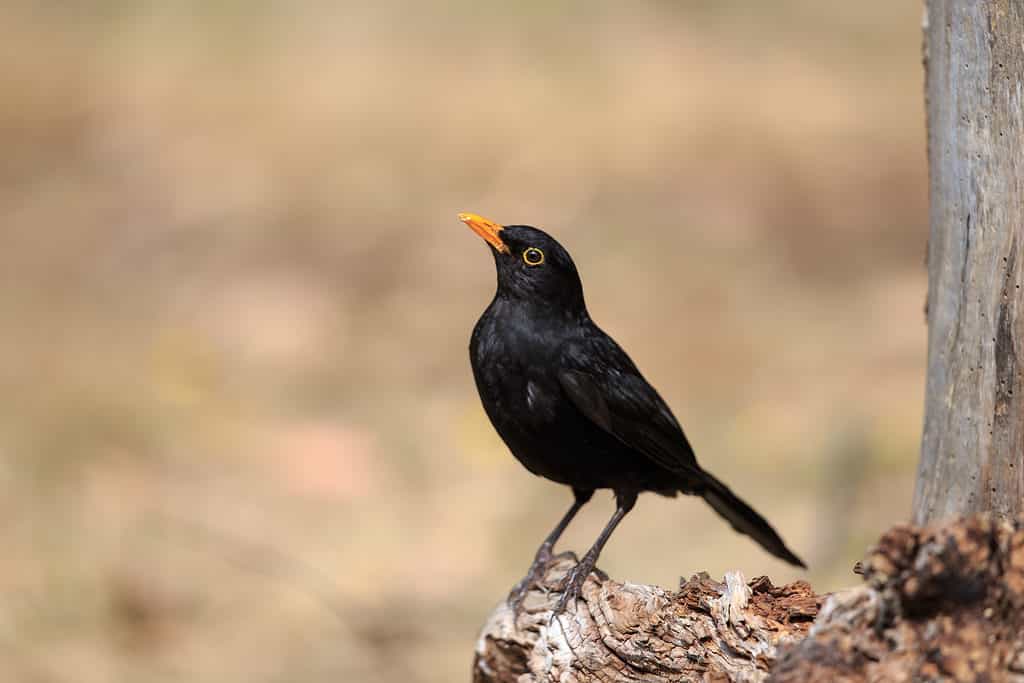
The Eurasian blackbird, also known as the common blackbird, is native to areas of Afro-Eurasia and has also been introduced to Australia and New Zealand.
©Edwin Godinho/Shutterstock.com
The Eurasian blackbird is 24.0 – 27.0 cm. (9.4 – 10.6 in) long. Only the male has all-black plumage with a yellow to orange-yellow beak and eyerings, while the female is mostly brown with a brownish beak. Both sexes also have dark irises, legs, and feet.
6. European Starling (Sturnus vulgaris)
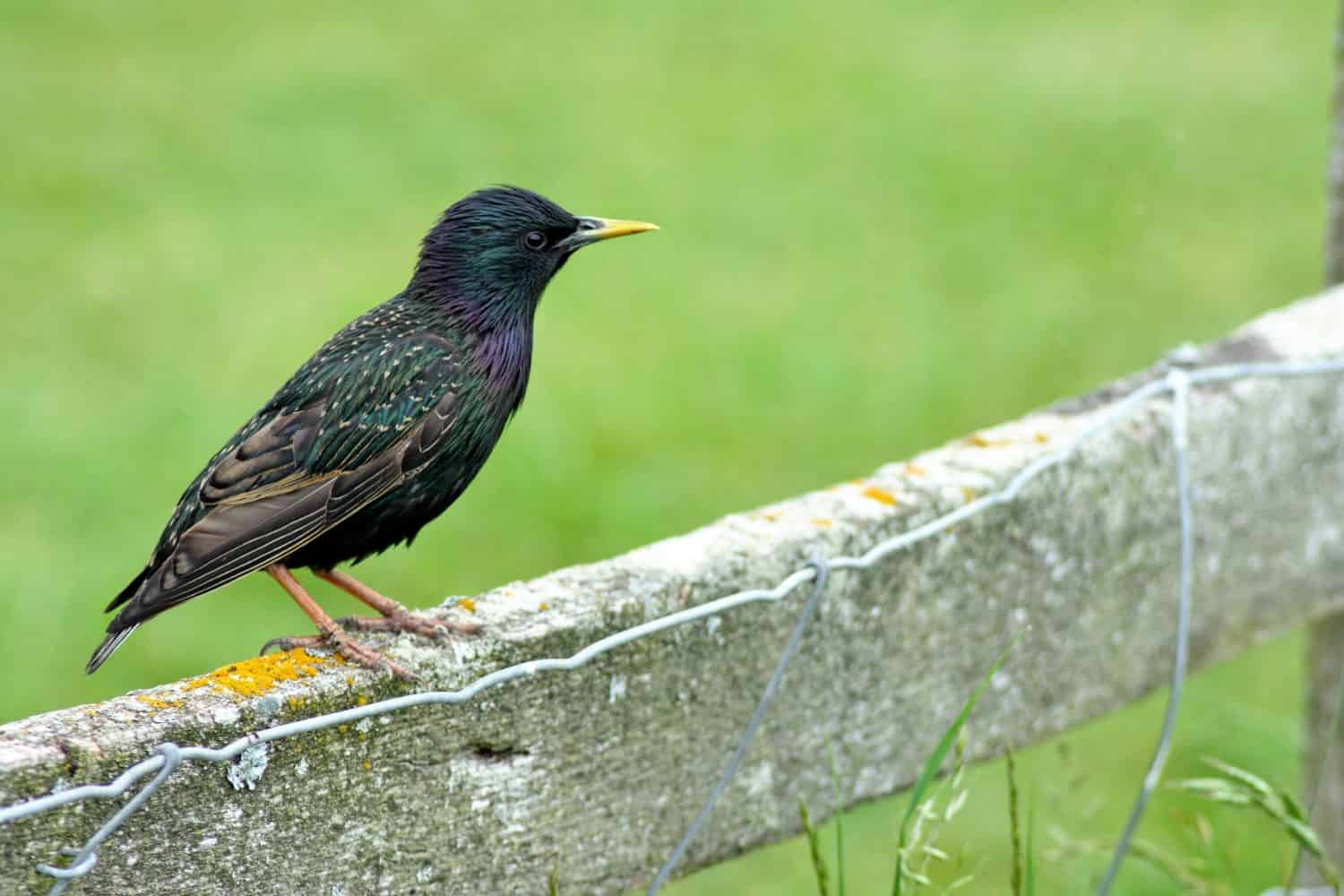
While the European starling, also known as the common starling, was originally native to areas of Afro-Eurasia, it has been introduced widely elsewhere and is now one of North America’s most abundant species.
©BreizhAtao/Shutterstock.com
The European starling is 20.0 – 25.0 cm (7.9 – 9.8 in) long. Both sexes have similar glossy black plumage with a strong metallic iridescence which becomes spangled with white spots post-breeding season; however, the female is a bit less glossy overall. Additionally, the beaks are only yellow during the breeding season and turn dark after. Irises are dark brown, and legs and feet are reddish brown.
7. Great Myna (Acridotheres grandis)
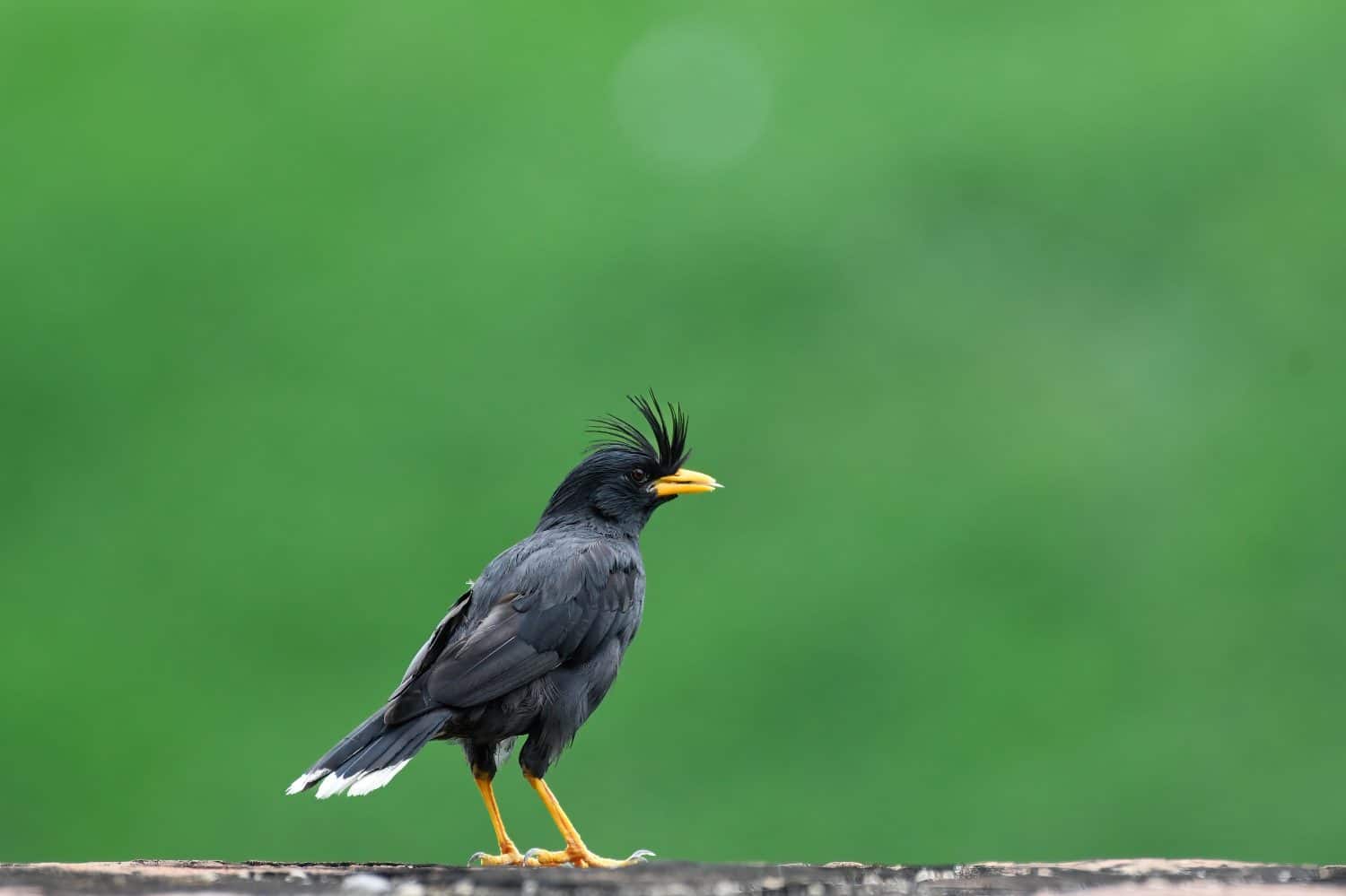
The great myna is a starling species native to lowlands and foothills in Southeast Asia.
©Alaizzarr/Shutterstock.com
The great myna is 24.5 – 27.5 cm (9.6 – 10.8 in) long. Both sexes have black plumage with bits of white on the wings and tail and a sparse head crest. The beak, legs, and feet are also all yellow, while the irises are reddish brown.
8. Javan Myna (Acridotheres javanicus)
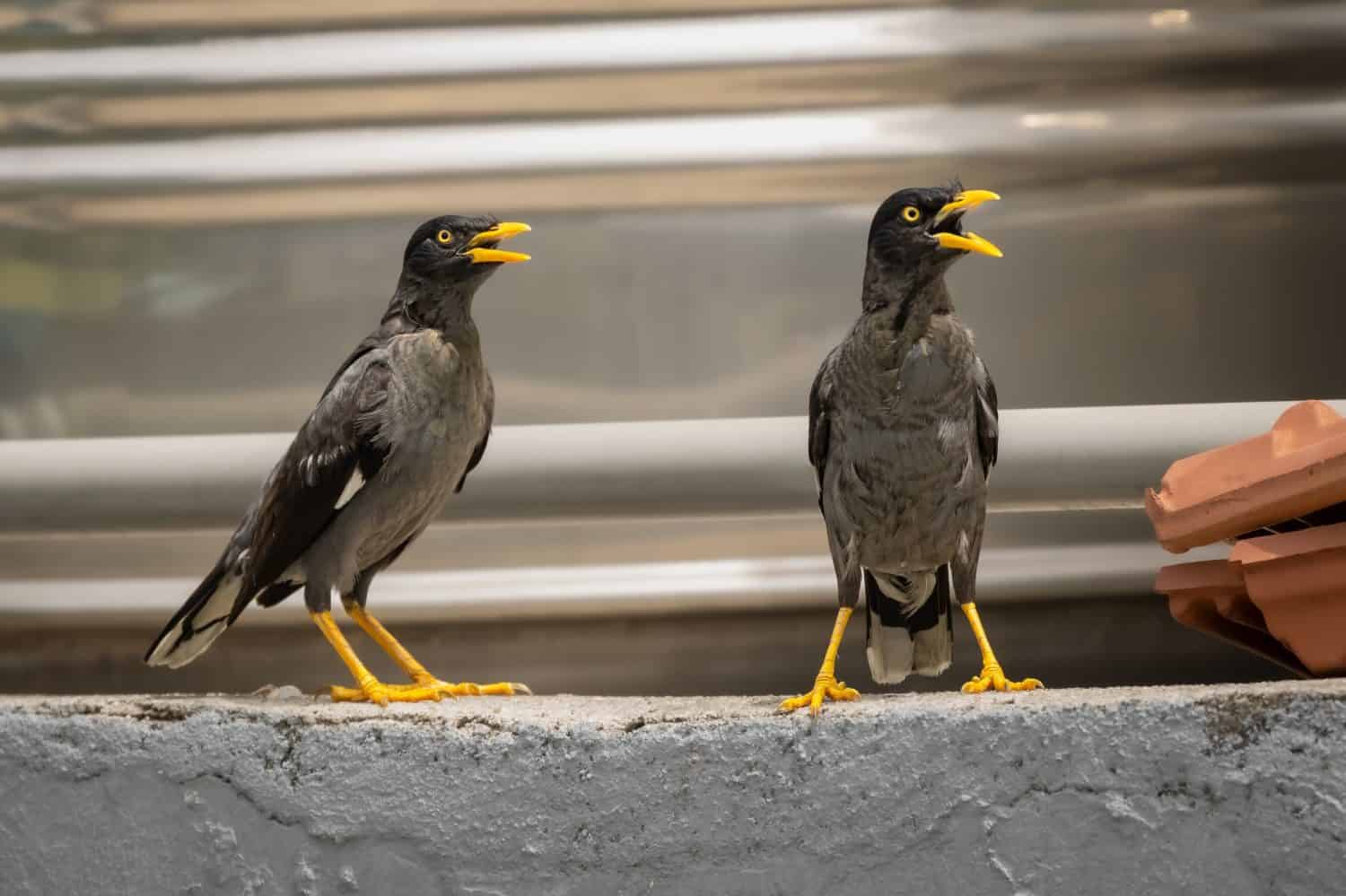
The Javan myna is originally native to Java and Bali but has been introduced into other areas of Southeast Asia.
©legendarynerdtyrant/Shutterstock.com
The Javan myna is 21 – 25 cm (8.3 – 19.8 in) long. Both sexes have plumage similar to their great myna cousins, including the head crest and white patches, but their plumage is a mix of basic black, ashy black, slaty black, and brownish-black. They also have lemon-yellow irises and orange-yellow beaks, legs, and feet.
The IUCN Red List currently lists this species as Vulnerable.
9. Pale-Eyed Thrush (Turdus leucops)
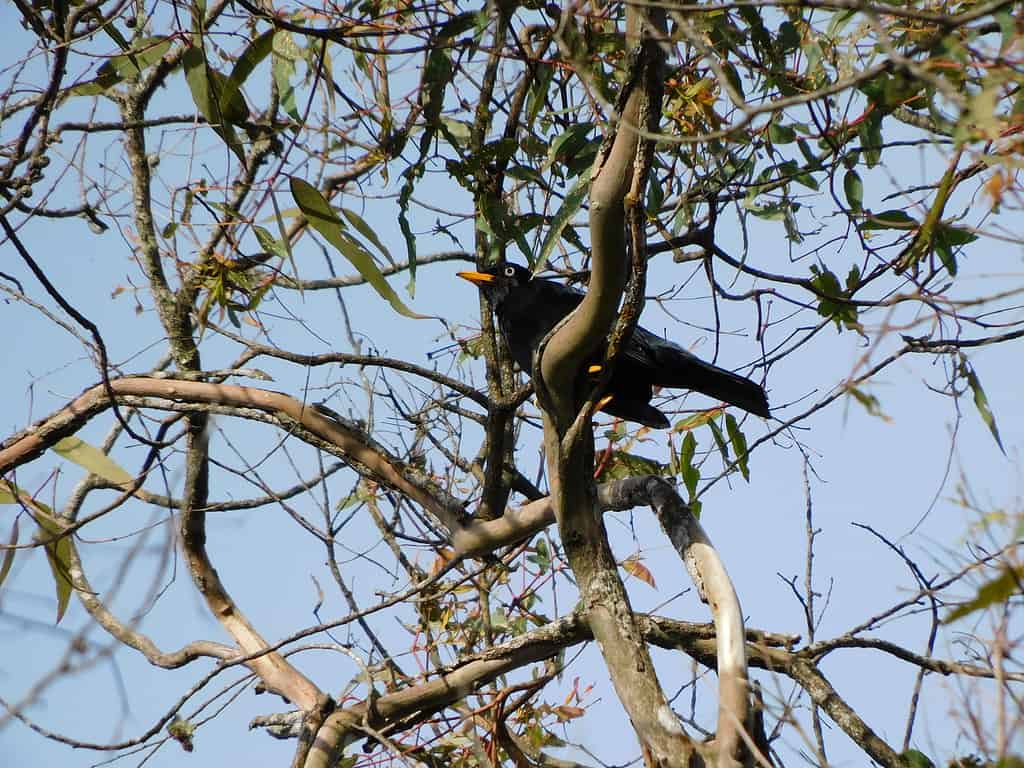
The pale-eyed thrush inhabits montane forests in areas of northern and western South America.
©Álvaro Rivas Godin / CC BY 4.0 – License
The pale-eyed thrush is 18.0 – 23.5 cm (7.1 – 9.3 in) long. Only the male has all-black plumage, along with a yellow to orange beak, legs, and feet, as well as bluish-white irises. In contrast, the female is duller overall, with an olive-brown plumage, duller yellowish bill and legs, and pale gray-brown irises.
10. Sooty Thrush (Turdus nigrescens)
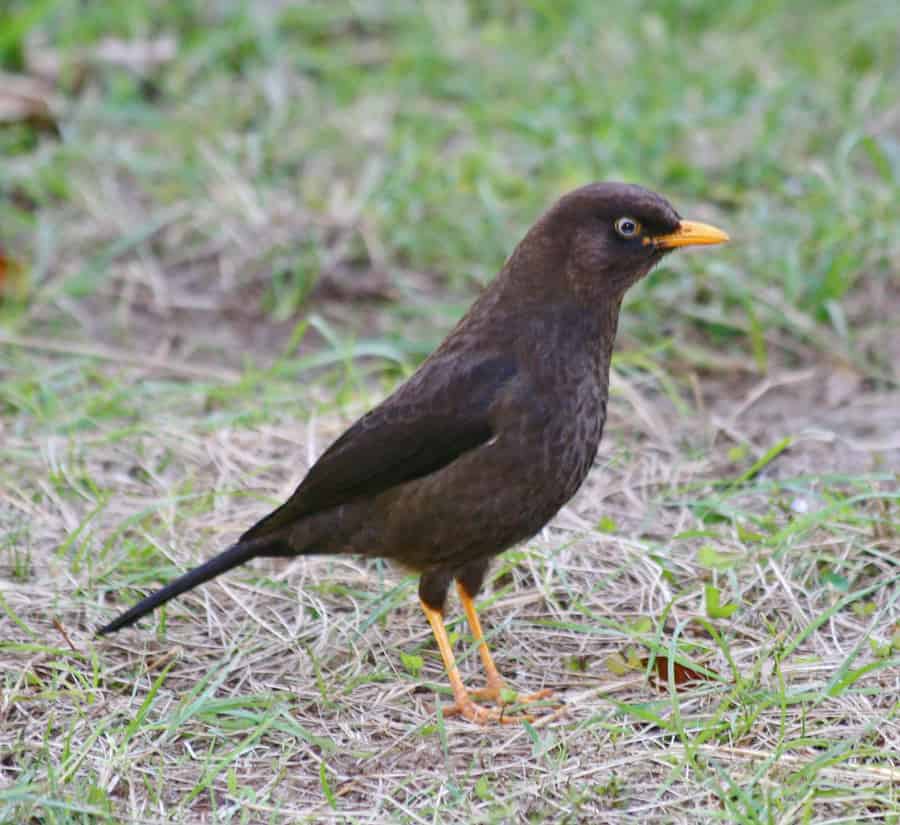
The sooty thrush is endemic to the highlands of Costa Rica and Panama.
©Joseph C Boone / CC BY-SA 3.0 – License
The sooty thrush is 24 – 25.5 cm (9.4 – 10.0 in) long. Only the male has brownish-black plumage with sooty-black lores, orbital area, wings, and tail, while the female is browner and sometimes has dark streaks on the throat. Both sexes also have yellow-orange beaks, white irises, and orange eyerings, legs, and feet.
11. Spotless Starling (Sturnus unicolor)
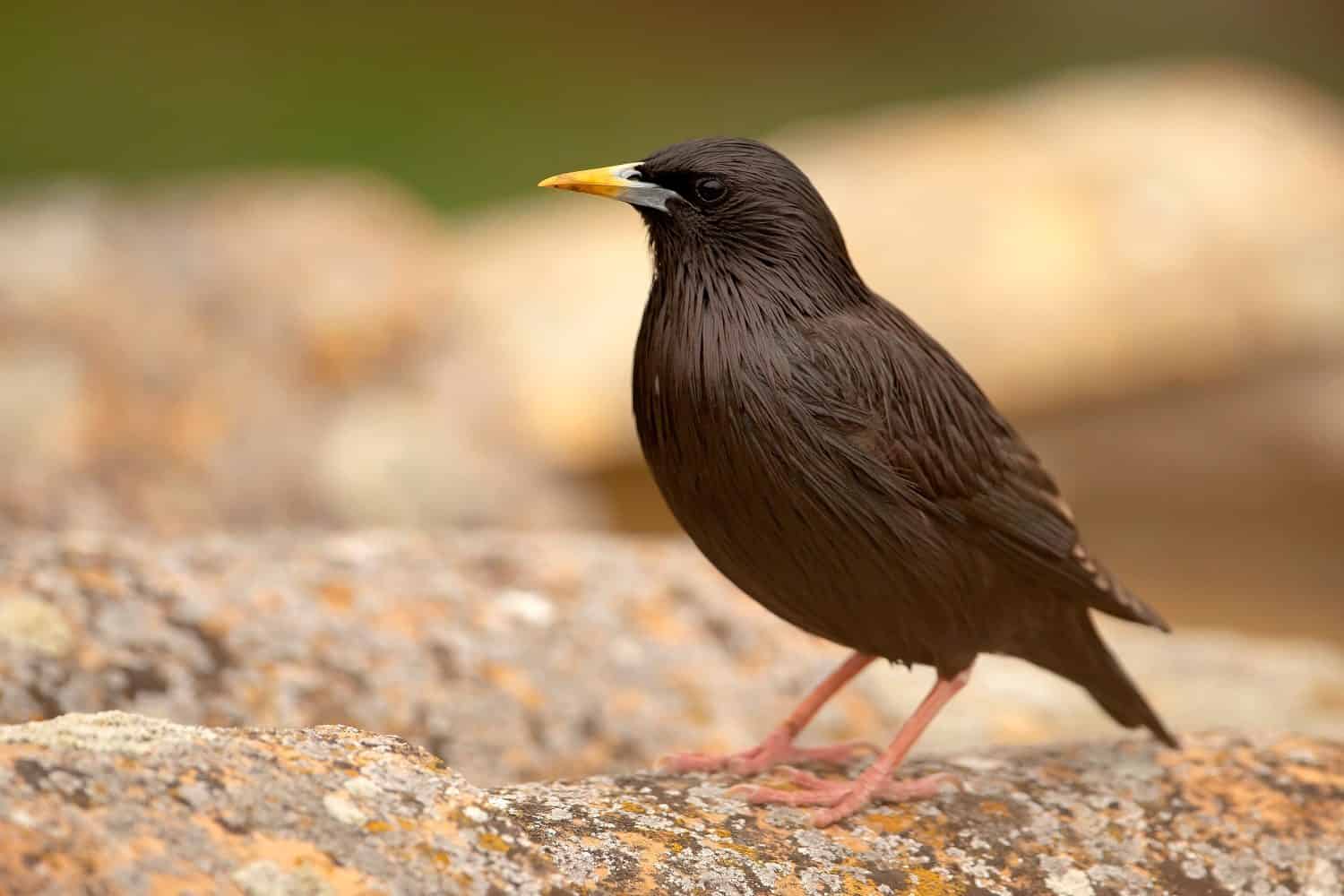
Spotless starlings are native to the western Mediterranean region.
©gergosz/Shutterstock.com
The spotless starling is 22.0 cm (8.7 in) long. Both sexes have glossy black plumage with a strong metallic iridescence, although the female is a little less glossy overall. The male has dark brown irises and pink to reddish-pink legs and feet, while the female has brown irises and brownish-pink legs and feet. Like their cousins the European starlings, the beaks of both sexes are only yellow during the breeding season and dark the rest of the year.
12. Tibetan Blackbird (Turdus maximus)
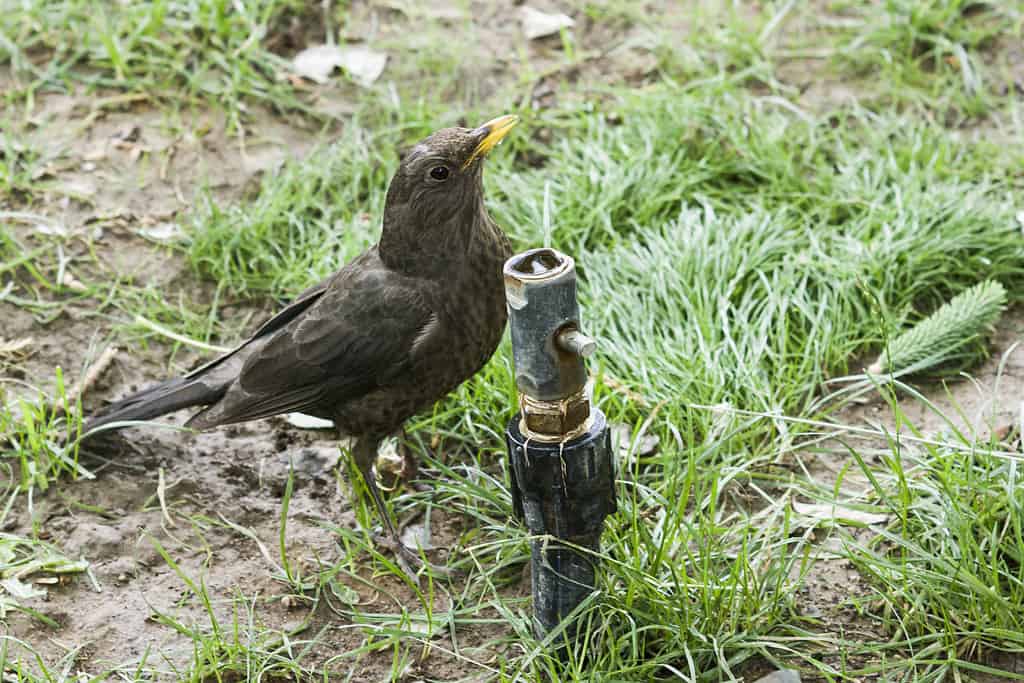
The Tibetan blackbird is a species of thrush native to the
Himalayan
region.
©cl2004lhy/iStock via Getty Images
The Tibetan blackbird is 23.0 – 28.0 cm (9.1 – 11.0 in) long. The male has a black head, breast, wings, and tail, with more brownish-black plumage elsewhere, while the female has blackish-brown upperparts and browner underparts. The male’s beak is a dull orange-yellow, while the female’s is a more dusky yellow. Both sexes also have dark irises, legs, and feet.
13. Velvet Scoter (Melanitta fusca)

The velvet scoter, also called the velvet duck, is a migratory species native to Eurasia.
©Åsa Berndtsson / CC BY 2.0 – License
The velvet scoter is 51.0 – 58.0 cm (21.0 – 22.8 in) long. During the breeding season, the male’s plumage is a glossy black with white wing bars visible during flight; off-season, it appears duller with pale-mottled flanks. The male also is the one with a yellow to yellowish-orange beak that has a pinkish-orange to reddish-orange nail and black knob, along with gray-white irises and red-pink legs and feet with blackish webbing. In contrast, the female has mostly brown plumage, with a dull gray to black beak, brown irises, and dull reddish legs and feet.
The IUCN Red List currently lists this species as Vulnerable.
14. Yellow-Billed Cacique (Amblycercus holosericeus)
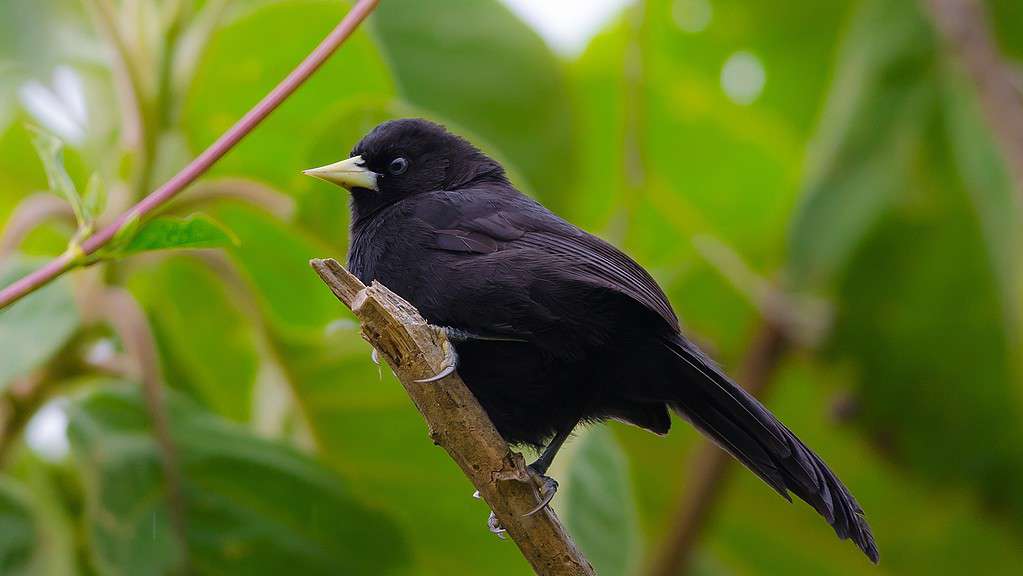
Yellow-billed caciques inhabit forests in portions of Mexico, Central America, and South America.
©https://www.flickr.com/photos/neilorlandodiazmartinez / CC BY-SA 2.0 – License
The yellow-billed cacique is 20.5 – 21.5 cm (8.1 – 8.5 in) long, with females on the smaller end of the range. The male’s plumage is rich black, while the female’s is slightly less so (described as more slaty). In both sexes, the chisel-shaped beak is yellow, the irises pale yellow, and the legs and feet dark gray.
15. Yellow-Billed Chough (Pyrrhocorax graculus)
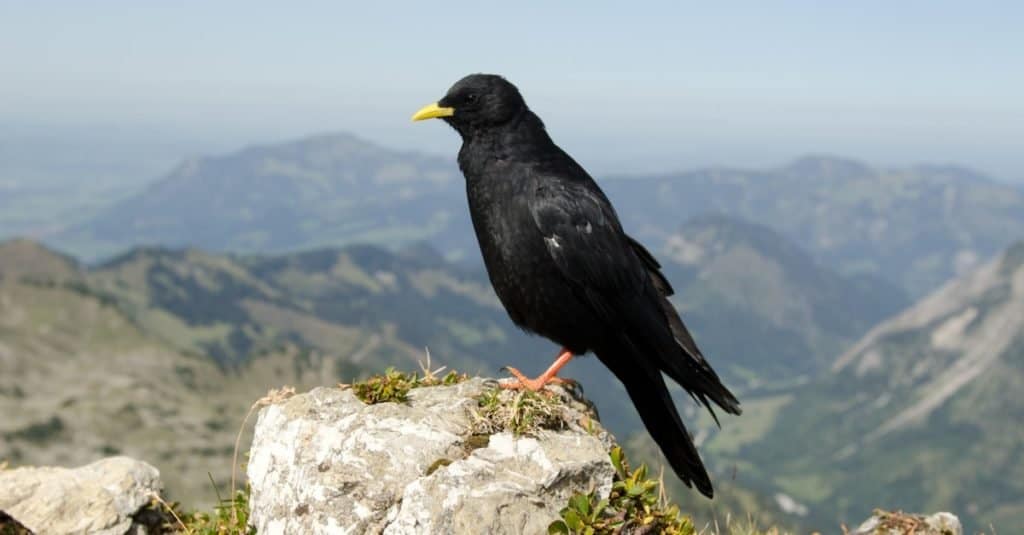
The yellow-billed chough, also known as the alpine chough, is a corvid species that is found in high mountains across areas of Afro-Eurasia.
©Wolfgang Kruck/Shutterstock.com
The yellow-billed chough is 34.0 – 38.0 cm (13.4 – 50.0 in) long. Both sexes have entirely black plumage with a slight gloss and a lemon-yellow beak. The irises are dark brown, and the legs and feet are reddish.
16. Yellow-Billed Nunbird (Monasa flavirostris)
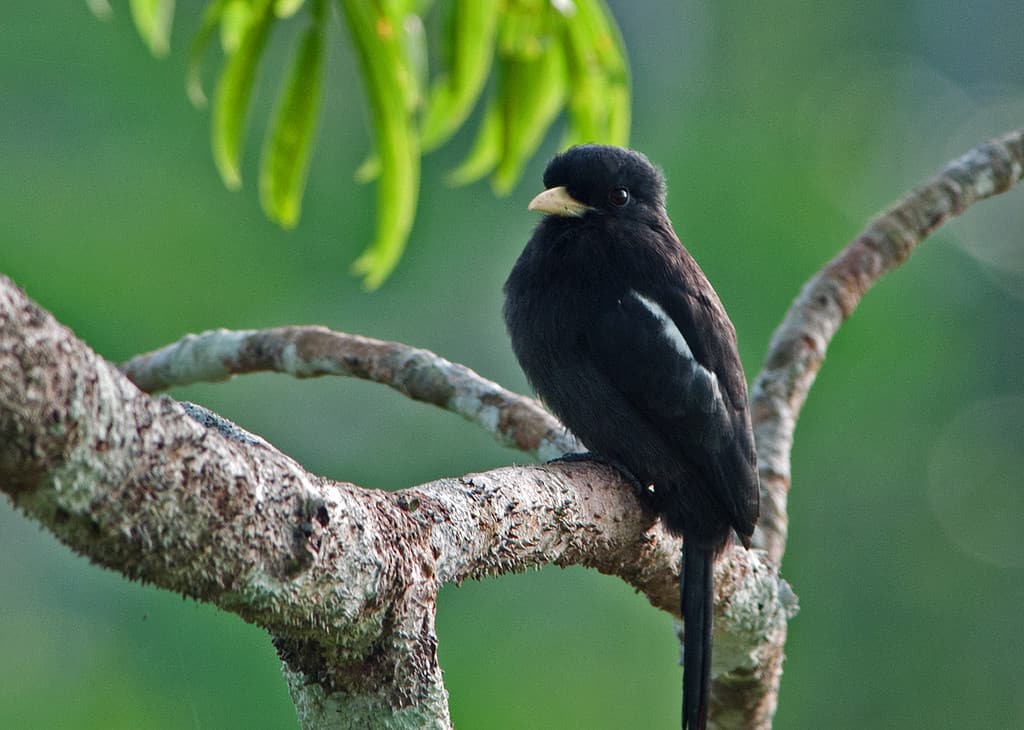
The yellow-billed nunbird is found in the western Amazon Basin of South America.
©Patty McGann / CC BY 2.0 – License
The yellow-billed nunbird is 23.0 – 25.0 cm (9.1 – 9.8 in) long. Both sexes have predominantly sooty-black plumage with a very dark gray belly and green-black tail, and a bit of white on the wings. They also both have yellow beaks, along with dark irises, legs, and feet.
17. Yellow-Legged Thrush (Turdus flavipes)
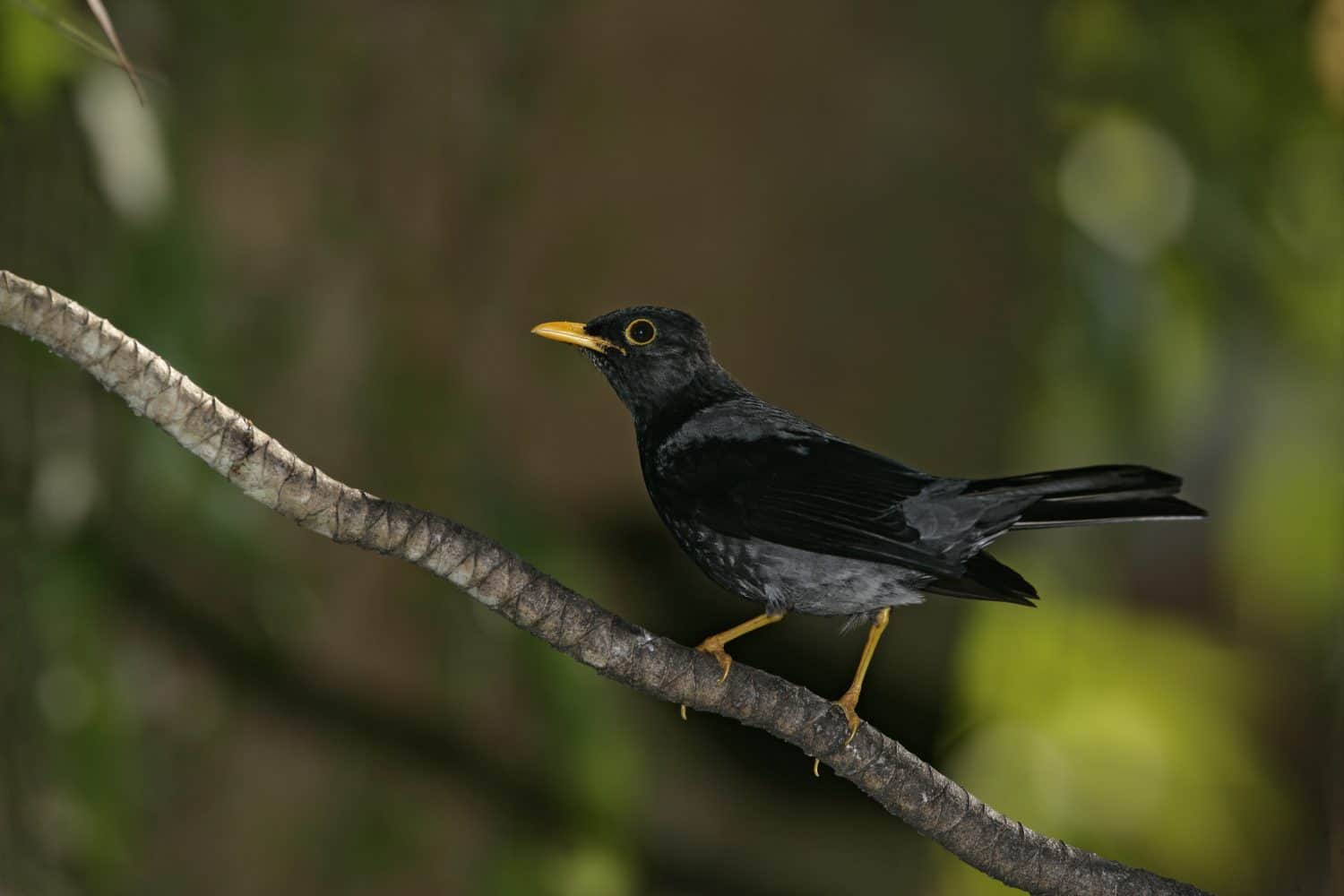
Yellow-legged thrushes have a spotty distribution across northern and eastern South America and a few Caribbean islands.
©Erni/Shutterstock.com
The yellow-legged thrush is 22.0 cm (8.7 in) long. The male has a black hood, breast, wings, and tail, with slate-gray plumage elsewhere, along with a yellow beak. The female, in contrast, is brown with a dull beak. Both sexes have dark irises along with yellow eyerings, legs, and feet.
Summary of 17 Black Birds With Yellow Beaks
| Species | Where Found | Male, Female, or Both with Black Plumage + Yellow Beak |
|---|---|---|
| 1. Black Crake (Zapornia flavirostra) | Sub-Sahara Africa | both sexes |
| 2. Black Thrush (Turdus infuscatus) | Mexico, Central America | male only |
| 3. Chiguanco Thrush (Turdus chiguanco) | W South America | both sexes (southern form only) |
| 4. Chinese Blackbird (Turdus mandarinus) | China & Indochina | male only |
| 5. Eurasian Blackbird (Turdus merula) | Afro-Eurasia (introduced to Australia & New Zealand) | male only |
| 6. European Starling (Sturnus vulgaris) | Afro-Eurasia (introduced to North America, the Caribbean, South Africa, Australia, New Zealand, and Fiji) | both sexes (female slightly duller and grayer); yellow bill only during breeding season |
| 7. Great Myna (Acridotheres grandis) | SE Asia | both sexes |
| 8. Javan Myna (Acridotheres javanicus) | Java & Bali (introduced elsewhere in SE Asia) | both sexes |
| 9. Pale-Eyed Thrush (Turdus leucops) | N & W South America | male only |
| 10. Sooty Thrush (Turdus nigrescens) | Costa Rica, Panama | male only |
| 11. Spotless Starling (Sturnus unicolor) | W Mediterranean region | both sexes (female slightly duller and grayer); yellow bill only during breeding season |
| 12. Tibetan Blackbird (Turdus maximus) | Himalayas | male only |
| 13. Velvet Scoter (Melanitta fusca) | Eurasia | male only |
| 14. Yellow-Billed Cacique (Amblycercus holosericeus) | Mexico, Central America, South America | both sexes (female slightly duller) |
| 15. Yellow-Billed Chough (Pyrrhocorax graculus) | Afro-Eurasia | both sexes |
| 16. Yellow-Billed Nunbird (Monasa flavirostris) | W South America | both sexes |
| 17. Yellow-Legged Thrush (Turdus flavipes) | N & E South America, Caribbean | male only |
The photo featured at the top of this post is © Ondrej Prosicky/iStock via Getty Images
Thank you for reading! Have some feedback for us? Contact the AZ Animals editorial team.



